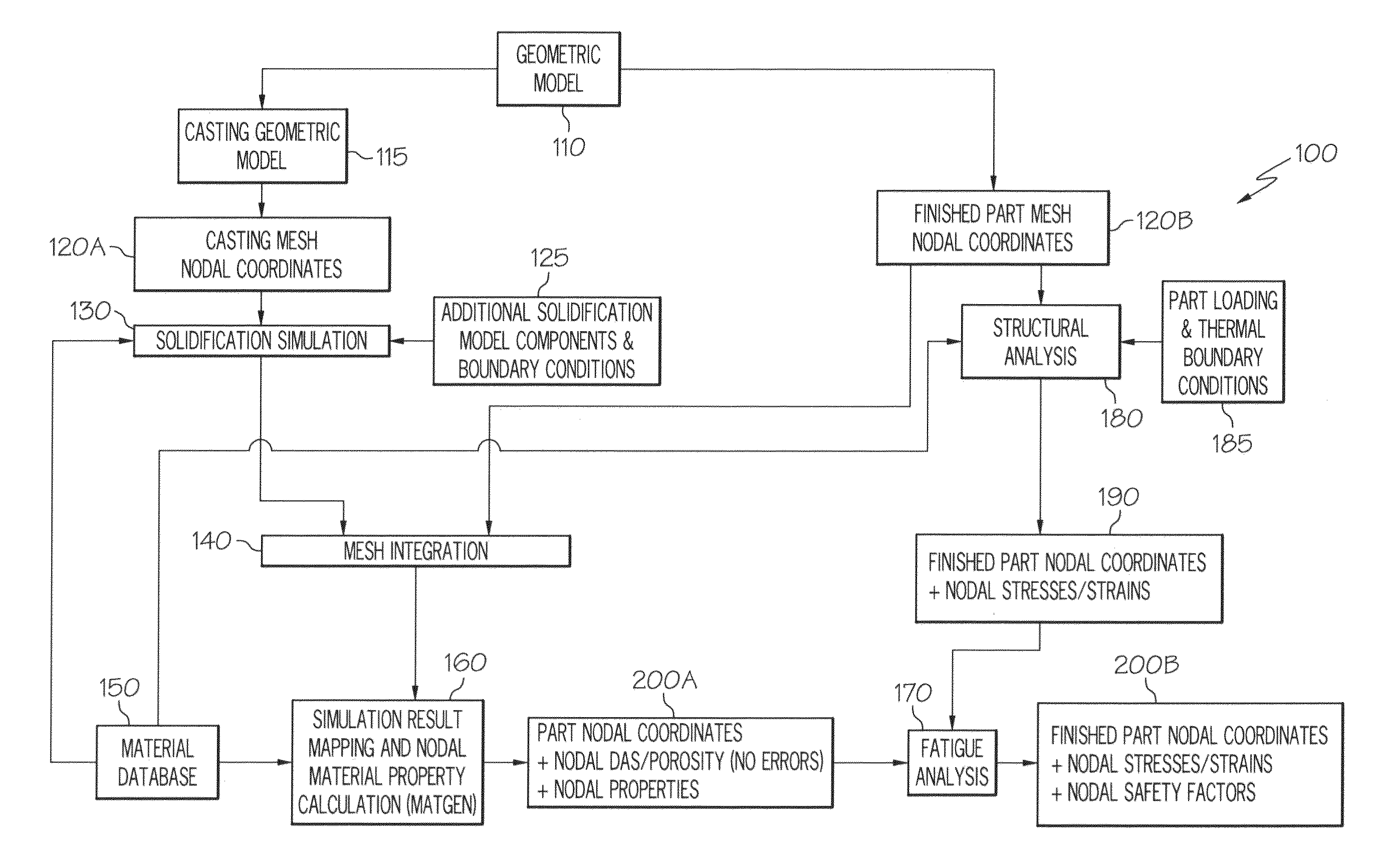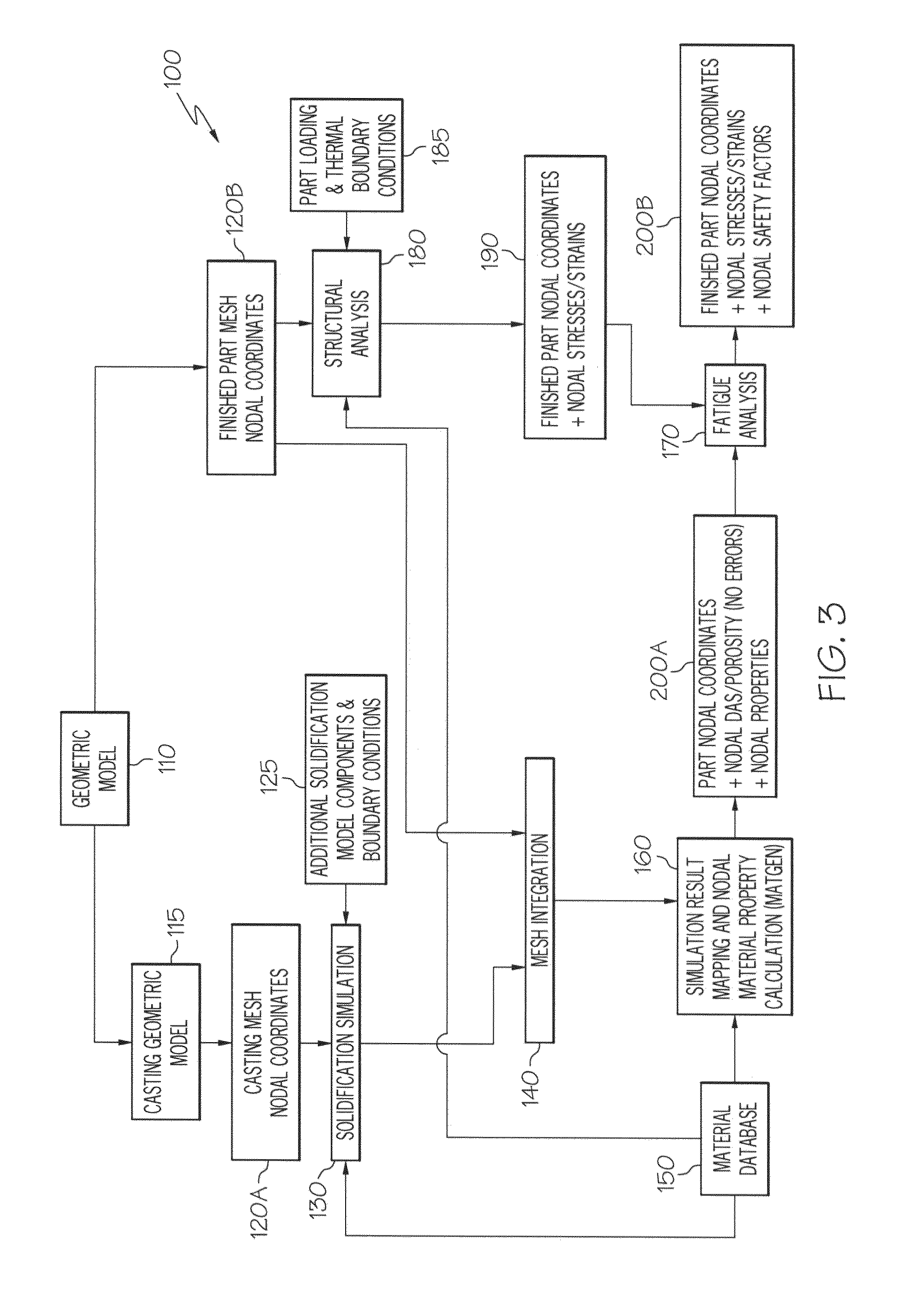Material property distribution determination for fatigue life calculation using dendrite arm spacing and porosity-based models
a material property and fatigue life calculation technology, applied in the field of predicted mechanical properties of cast components, can solve the problems of compromising the life prediction of cast components without correction for such material variations, and many objects with uniform material properties that cannot be identified by durability analysis or simulation,
- Summary
- Abstract
- Description
- Claims
- Application Information
AI Technical Summary
Benefits of technology
Problems solved by technology
Method used
Image
Examples
Embodiment Construction
[0037]The present inventors have developed the material property generation program MATGEN that reads in (or otherwise accepts, such as in text format) nodal level values from a casting process simulation software (such as the one or more of the ones mentioned above) that may include routines to consider features such as casting defects and microstructure. In one form, the values can be indicative of DAS and porosity, while in another, the values can be precursor quantities such as solidification rate and solidification time that are algorithmically related to DAS and porosity. MATGEN couples those values to a three-dimensional FEA mesh or related geometric model (such as those used in computer-aided design (CAD) or structural analysis, for example, ABAQUS, Hypermesh or the like) applications to contain node numbers as well as three-dimensional {x, y, z} coordinates that correspond to those node numbers of the component being studied (for example, an automotive engine block or cylin...
PUM
| Property | Measurement | Unit |
|---|---|---|
| material properties | aaaaa | aaaaa |
| material property | aaaaa | aaaaa |
| solidification time | aaaaa | aaaaa |
Abstract
Description
Claims
Application Information
 Login to View More
Login to View More - R&D
- Intellectual Property
- Life Sciences
- Materials
- Tech Scout
- Unparalleled Data Quality
- Higher Quality Content
- 60% Fewer Hallucinations
Browse by: Latest US Patents, China's latest patents, Technical Efficacy Thesaurus, Application Domain, Technology Topic, Popular Technical Reports.
© 2025 PatSnap. All rights reserved.Legal|Privacy policy|Modern Slavery Act Transparency Statement|Sitemap|About US| Contact US: help@patsnap.com



